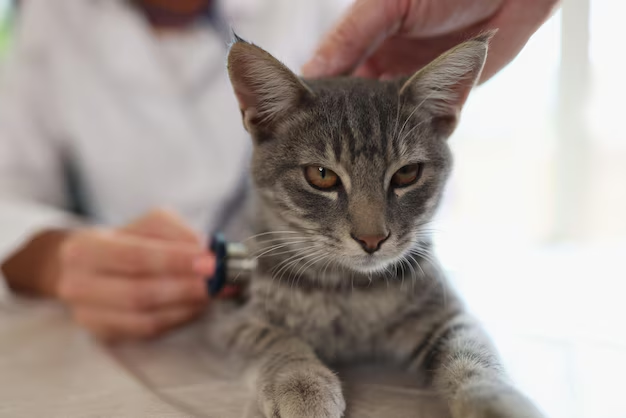Discover If Your Cat Has Diabetes with These Simple Signs
As a cat owner, it’s important to be aware of the health concerns that can affect your feline friend, and diabetes is one of them. While it might seem daunting, understanding the signs of diabetes in cats can aid in early detection and management, ensuring your kitty leads a healthy, happy life. Let’s explore how you can identify if your cat might have diabetes and how being proactive can open doors to solutions beyond your pet’s immediate health needs.
Signs Your Cat Might Have Diabetes
Unexplained Weight Loss: Despite having a normal or increased appetite, your cat may lose weight. This can happen because the body's cells aren’t using glucose properly, forcing the body to break down fat and muscle for energy.
Increased Thirst and Urination: A diabetic cat will drink more water and urinate more frequently. If you're constantly refilling the water bowl or cleaning out the litter box more than usual, this might be a red flag.
Lethargy and Weakness: Diabetic cats can appear unusually tired or weak. They might not be as playful as before, and you may notice muscle weakness, particularly in the back legs.
Poor Coat Condition: A dull, dry coat or fur that easily mats could indicate diabetes, as the body struggles to allocate energy to skin and fur health.
What to Do if You Suspect Diabetes
If you observe these symptoms, it’s crucial to consult your veterinarian. Early diagnosis and treatment can greatly affect the management of diabetes. Veterinarians may run tests to confirm the condition, including blood glucose tests and urine analysis.
Treatment typically involves insulin therapy, but dietary management is also important. A diet high in protein and low in carbohydrates can help regulate your cat’s blood sugar levels. Regular veterinary visits will help monitor your cat’s progress and ensure the treatment plan is effective.
Exploring Financial Support and Resources
Diabetes management in pets can become costly, involving routine vet visits, medication, and specialty diets. Here’s where financial resources can ease the burden:
Pet Insurance: Investing in pet insurance before a diagnosis can help cover some costs of chronic conditions like diabetes. Look for policies that include medication and continuous treatment.
Charitable Organizations: Organizations often assist pet owners with specific medical needs. Investigate local and national charities that might offer aid for pet healthcare expenses.
Personal Finance Solutions: If costs are overwhelming, consider budgeting tools or personal loans designed for medical expenses. Some credit cards also offer favorable terms for medical repayments.
Encouraging Long-Term Solutions
Management of chronic conditions in pets, like diabetes, encourages a responsible approach to general financial health. Understanding your options for medical aid programs not only relieves immediate stress but paves the way for comprehensive financial security.
Key Financial Assistance Programs and Solutions for Pet Care
- 🐾 Pet Insurance Plans: Coverage for ongoing veterinary care and medication.
- 🏥 Emergency Vet Funds: Some clinics offer payment plans or deferred payment options.
- 🏦 Credit Cards: Look for cards that provide interest-free periods or rewards on healthcare spending.
- 📚 Educational Grants: Explore grants or scholarships if you require further education to step into a higher-paying job for increased financial flexibility.
- 📈 Debt Relief Programs: These can reduce financial pressures, helping you allocate more funds for unexpected pet health costs.
By knowing the signs of diabetes and being prepared with helpful financial solutions, you secure not only your cat’s health but your peace of mind. Embrace these tools to ensure you and your furry companion can enjoy every moment without undue stress.
